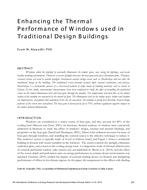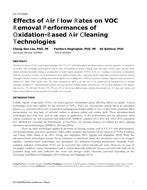Click here to purchase
Moisture damage in buildings is common, where the consequences can be catastrophic, and the remedial measures expensive. Factors influencingcondensation risk include exterior climate conditions, interior environment, thermal and vapor properties of the structure and the heating, ventilation andair conditioning system.Condensation can occur on building surfaces or can be interstitial, causing serious problems if left unchecked; such as crumbling or soft spots in drywall,decay in wood framing or corrosion of steel, paint peeling, damage to the insulation inside the walls, and mold and mildew problems. Research shows thatseveral human health illness is attributed to damp indoor air quality such as cough, wheeze, asthma and dyspnea.Controlling moisture is crucial to ensure healthy indoor air quality, occupant comfort and to avoid the deterioration of building structures. Hygrothermalengineering is the combined effect of temperature and humidity transport through the building components, influenced by the envelope material compositionand the surrounding climate.This work is concerned with the assessment of the possibility of condensation in the building structure using WUFI® Pro, a software that performs atransient two-dimensional heat and moisture transport in multi-layered building components using real climatic conditions. Typical walls and roofs used inhot and humid climates, such as typical climates across the United Arab Emirates, are investigated for possible condensation and accordingly buildingmaterials are selected with appropriate water and thermal transmission characteristics.
Citation: 3rd Intl Conf: Efficient Bldg Design
Product Details
- Published:
- 2018
- Number of Pages:
- 8
- Units of Measure:
- Dual
- File Size:
- 1 file , 1.9 MB
- Product Code(s):
- D-ICEB18-C013


